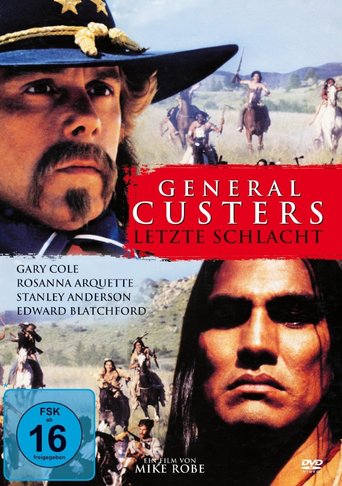

Very very predictable, including the post credit scene !!!
... View MoreBeautiful, moving film.
... View MoreWhile it doesn't offer any answers, it both thrills and makes you think.
... View MoreActress is magnificent and exudes a hypnotic screen presence in this affecting drama.
... View MoreGreat acting, well directed and edited,accurate in the history...would recommend this unreservedly. The American government's crimes against the indigenous people are pretty well-known by now, and they are not unmentioned in this story. However,the attention is mostly on Custer's personality--his narcissism and ambition. He was, after all, a very interesting American type: convinced that he will succeed simply because he has the will. He was dashing and romantic and daring and completely foolhardy---all well-known and appreciated (or unappreciated) at the time. Gary Cole does a great job conveying the complexities of the man. Rosanna Arquette is instrumental in conveying his humanity. The story is Shakespearean tragedy at its best, and this production does full justice to that quality.
... View MoreI actually just bought this movie(ebay) for a significant amount. Not because I really thought it was that good, but because I`m totally hung up on the history of native Americans, and especially obsessed with the battle of Little Big Horn. In that respect I was NOT disappointed by this movie.The climactic battle scene was actually very satisfying to me, because i was afraid it would a long wait for nothing. I was eager to see if they had managed to bring the great battle to a realistic scale (3000 thousand warriors, enormous Sioux camp). I was almost completely convinced. Both the choreography and the attention to historical details was flawless! All in all a must for "indians`/western fans" but also watchable for people interested in historical/war dramas. When that is said, this is after all a TV-production, and my review must be seen in that context. 7/10
... View MoreGood T.V mini-series, but a confused story line that makes the early part of the movie, long convoluted and uninteresting. The characters are not fully developed and as such we dont really care about any of them, besides we already know what is going to happen. The battle sequences are O.K. but one does not get the feel of a large cast engaged in a large Cavalry battle. Most shots have only a few actors in them, and there are no large panoramic shots of a Cavalry Brigade in action. The previous week I had watched TARAS BULBA with Yul Brynner and Tony Curtis. The Cavalry sequences were broad, expansive shots which gave the feel of a Cavalry charge. Here probably due to budgetary concerns there is never a massive Cavalry charge or even feel of Cavalry combat. Perhaps if the film had adressed some of Custers early Civil War heroics this problem might have been cured. But it did not. Still the natural beauty of the Great Plains of the American West comes through. IT would be almost impossible to miss it in any film made there. Here we get the full affect. But the storyline, the plastic characters, the uninteresting battle sequences, and its pure length make this move a very difficult film to sit through at one sitting. AS such its a FIVE.
... View MoreIf somewhat long, this epic "western" tells the story of Custer´s last defeat and tries to show what kind of man he was. Cole gives a stunning performance and the film is made interesting when seen thru "2 pairs of eyes", the wife of Custer seeing it from a white point of view and the Indian girl telling the truth about a black chapter of America´s historyDefinitely worth watching!
... View More